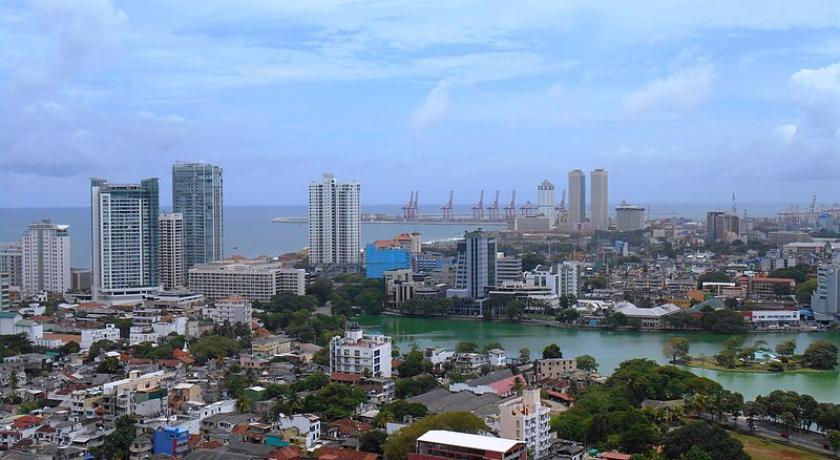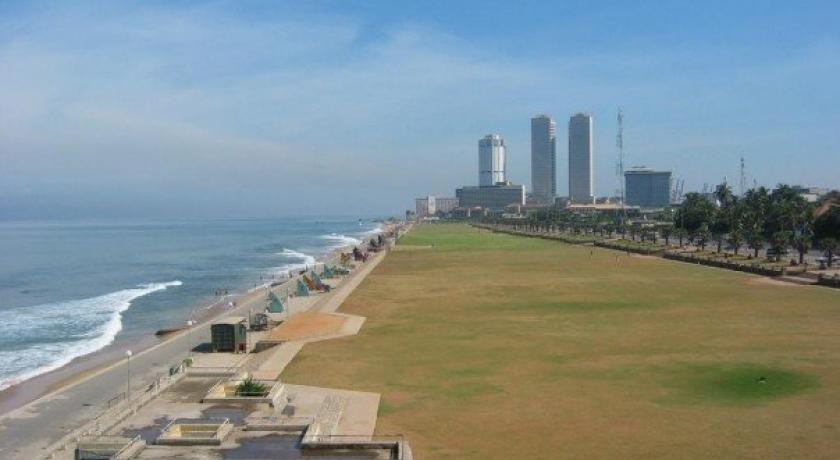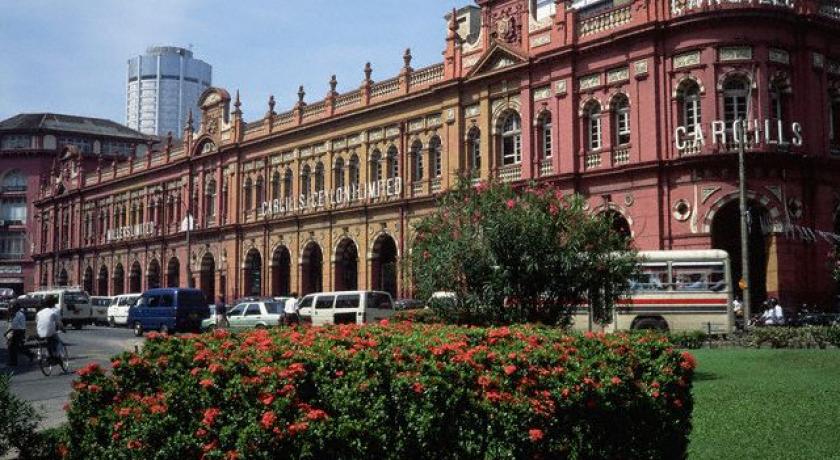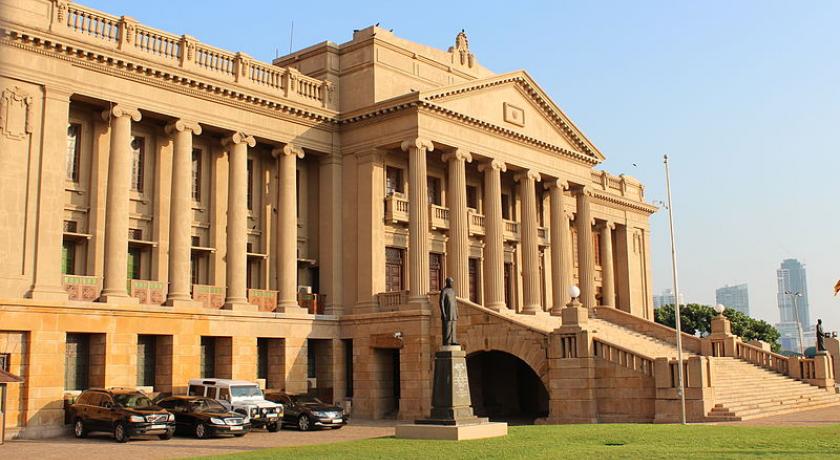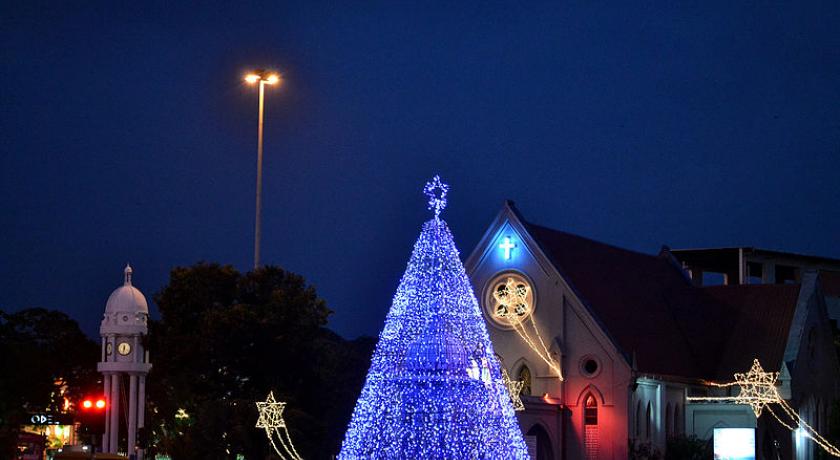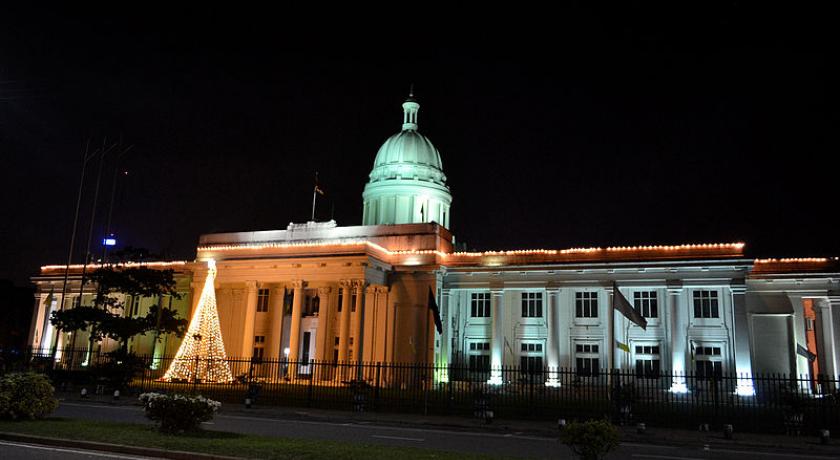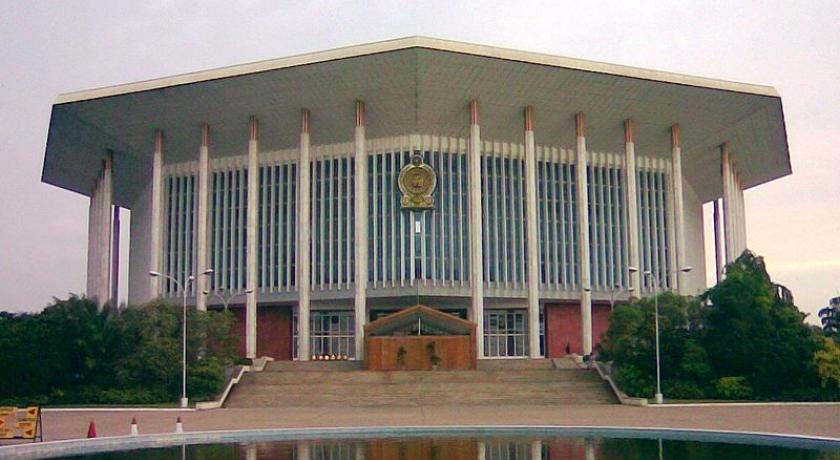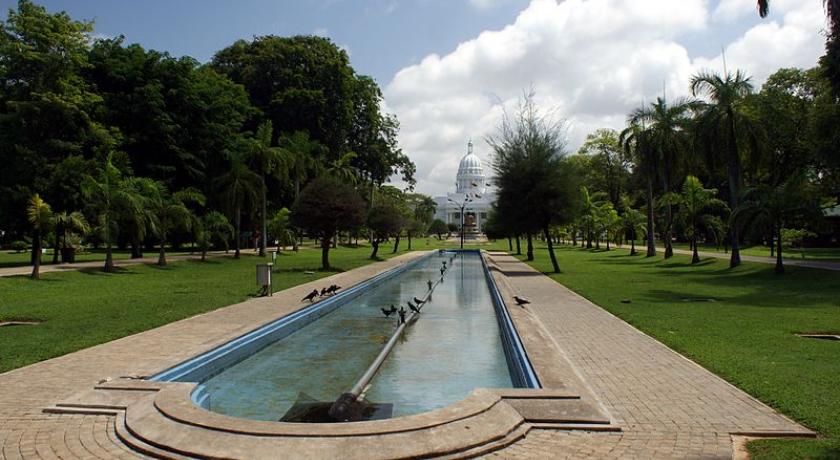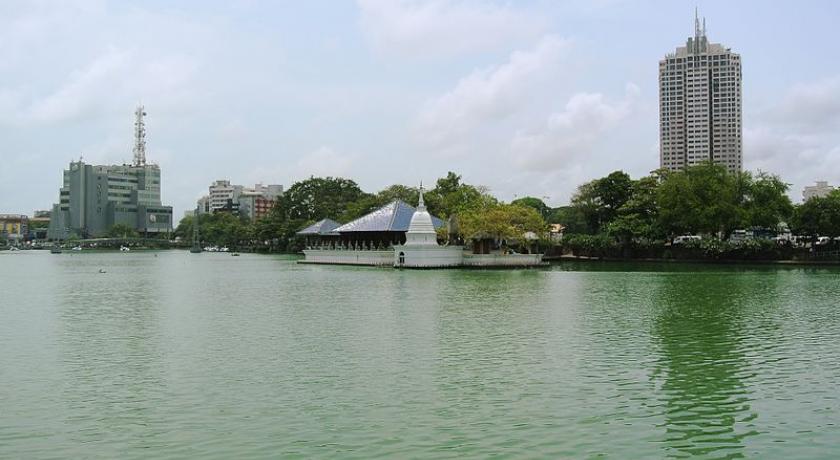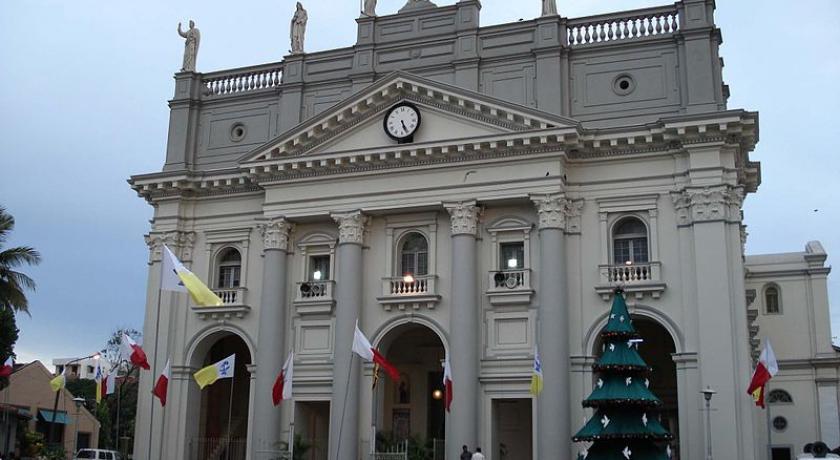Description
Colombo is the commercial capital and largest city of Sri Lanka. According to the Brookings Institution, Colombo metropolitan area has a population of 5.6 million, and 752,993 in the city proper. It is the financial centre of the island and a popular tourist destination. It is located on the west coast of the island and adjacent to Sri Jayawardenepura Kotte, the legislative capital of Sri Lanka. Colombo is often referred to as the capital since Sri Jayawardenepura Kotte is within the urban area of, and a satellite city of, Colombo. It is also the administrative capital of Western Province, Sri Lanka and the district capital of Colombo District. Colombo is a busy and vibrant place with a mixture of modern life and colonial buildings and ruins. It was the legislative capital of Sri Lanka until 1982.
Due to its large harbour and its strategic position along the East-West sea trade routes, Colombo was known to ancient traders 2,000 years ago. It was made the capital of the island when Sri Lanka was ceded to the British Empire in 1815, and its status as capital was retained when the nation became independent in 1948. In 1978, when administrative functions were moved to Sri Jayawardenepura Kotte, Colombo was designated as the commercial capital of Sri Lanka.
Like many cities, Colombo's urban area extends well beyond the boundaries of a single local authority, encompassing other municipal and urban councils such as Sri Jayawardenepura Kotte Municipal Council, Dehiwala Mount Lavinia Municipal Council, Kolonnawa Urban Council, Kaduwela Municipal Council and Kotikawatte Mulleriyawa Pradeshiya Sabha. The main city is home to a majority of Sri Lanka's corporate offices, restaurants and entertainment venues. Famous landmarks in Colombo include Galle Face Green, Viharamahadevi Park, Beira Lake, Colombo Racecourse, Planetarium, University of Colombo, Mount Lavinia beach, Nelum Pokuna Theatre, Colombo Lotus Tower (under construction) as well as the National Museum.
History
As Colombo possesses a natural harbour, it was known to Indian, Greeks, Persians, Romans, Arabs, and Chinese traders over 2,000 years ago. Traveller Ibn Batuta who visited the island in the 14th century, referred to it as Kalanpu. Arabs, whose prime interests were trade, began to settle in Colombo around the 8th century AD mostly because the port helped their business by the way of controlling much of the trade between the Sinhalese kingdoms and the outside world. Their descendants now comprise the local Sri Lankan Moor community.
Portuguese Era
Portuguese explorers led by Dom Lourenço de Almeida first arrived in Sri Lanka in 1505. During their initial visit they made a treaty with the King of Kotte, Parakramabahu VIII (1484–1508), which enabled them to trade in the island's crop of cinnamon, which lay along the coastal areas of the island, including in Colombo. As part of the treaty, the Portuguese were given full authority over the coastline in exchange for the promise of guarding the coast against invaders. They were allowed to establish a trading post in Colombo. Within a short time, however, they expelled the Muslim inhabitants of Colombo and began to build a fort in 1517.
The Portuguese soon realized that control of Sri Lanka was necessary for protection of their coastal establishments in India and they began to manipulate the rulers of the Kotte kingdom to gain control of the area. After skilfully exploiting rivalries within the royal family, they took control of a large area of the kingdom and the Sinhalese King Mayadunne established a new kingdom at Sitawaka, a domain in the Kotte kingdom. Before long he annexed much of the Kotte kingdom and forced the Portuguese to retreat to Colombo, which was repeatedly besieged by Mayadunne and the later kings of Sitawaka, forcing them to seek reinforcement from their major base in Goa, India. Following the fall of the kingdom in 1593, the Portuguese were able to establish complete control over the coastal area, with Colombo as their capital. This part of Colombo is still known as Fort and houses the presidential palace and the majority of Colombo's five star hotels. The area immediately outside Fort is known as Pettah (Sinhala ÓČ┤ÓĘÆÓȦ ÓČÜÓĘ£ÓȦÓĘöÓĘĆ piß╣Ła koß╣Łuva, "outer fort") and is a commercial hub.
Dutch Era
In 1638 the Dutch signed a treaty with King Rajasinha II of Kandy which assured the king assistance in his war against the Portuguese in exchange for a monopoly of the island's major trade goods. The Portuguese resisted the Dutch and the Kandyans but were gradually defeated in their strongholds beginning in 1639. The Dutch captured Colombo in 1656 after an epic siege, at the end of which a mere 93 Portuguese survivors were given safe conduct out of the fort. Although the Dutch (e.g., Rijcklof van Goens) initially restored the captured area back to the Sinhalese kings, they later refused to turn them over and gained control over the island's richest cinnamon lands including Colombo which then served as the capital of the Dutch maritime provinces under the control of the Dutch East India Company until 1796.
British era
Although the British captured Colombo in 1796, it remained a British military outpost until the Kandyan Kingdom was ceded to them in 1815 and they made Colombo the capital of their newly created crown colony of British Ceylon. Unlike the Portuguese and Dutch before them, whose primary use of Colombo was as a military fort, the British began constructing houses and other civilian structures around the fort, giving rise to the current City of Colombo.
Initially, they placed the administration of the city under a "Collector", and John Macdowell of the Madras Service was the first to hold the office. Then, in 1833, the Government Agent of the Western Province was charged with the administration of the city. Centuries of colonial rule had meant a decline of indigenous administration of Colombo, and in 1865 the British conceived a Municipal Council as a means of training the local population in self-governance. The Legislative Council of Ceylon constituted the Colombo Municipal Council in 1865 and the Council met for the first time on the January 16, 1866. At the time, the population of the region was around 80,000.
During the time they were in control of the Colombo, the British were responsible for much of the planning of the present city. In some parts of the city tram car tracks and granite flooring laid during the era are still visible today.
After independence
This era of colonialism ended peacefully in 1948 when Ceylon gained independence from Britain. Due to the tremendous impact this caused on the city's inhabitants and on the country as a whole, the changes that resulted at the end of the colonial period were drastic. An entire new culture took root. Changes in laws and customs, clothing styles, religions and proper names were a significant result of the colonial era. These cultural changes were followed by the strengthening of the island's economy. Even today, the influence of the Portuguese, the Dutch and the British is clearly visible in Colombo's architecture, names, clothing, food, language and attitudes. Buildings from all three eras stand as reminders of the turbulent past of Colombo. The city and its people show an interesting mix of European clothing and lifestyles together with local customs.
Historically, Colombo referred to the area around the Fort and Pettah Market which is famous for the variety of products available as well as the Khan Clock Tower, a local landmark. At present, it refers to the city limits of the Colombo Municipal Council. More often, the name is used for the Conurbation known as Greater Colombo, which encompasses several Municipal councils including Kotte, Dehiwela and Colombo.
Although Colombo lost its status as the capital of Sri Lanka in the 1980s, it continues to be the island's commercial centre. Despite the official capital of Sri Lanka moving to the adjacent Sri Jayawardanapura Kotte, most countries still maintain their diplomatic missions in Colombo.
Geography
Colombo's geography is a mix of land and water. The city has many canals and, in the heart of the city, the 65-hectare (160-acre) Beira Lake. The lake is one of the most distinctive landmarks of Colombo, and was used for centuries by colonists to defend the city. It remains a popular attraction, hosting regattas, and theatrical events on its shores. The Northern and North-Eastern border of the city of Colombo is formed by the Kelani River, which meets the sea in a part of the city known as the Modera (m┼Źdara in Sinhala) which means river delta.
Climate
Colombo features a tropical monsoon climate under the Köppen climate classification, falling just short of a tropical rainforest climate. Colombo's climate is fairly temperate all throughout the year. From March to April the average high temperature is around 31 °C (87.8 °F). The only major change in the Colombo weather occurs during the monsoon seasons from May to August and October to January. This is the time of year where heavy rains can be expected. Colombo sees little relative diurnal range of temperature, although this is more marked in the drier winter months, where minimum temperatures average 22 °C (71.6 °F). Rainfall in the city averages around 2,500 millimetres (98 in) a year.
Attractions
Galle Face Green is a ribbon of green space located in the heart of the city along the Indian Ocean coast, and is a popular destination for tourists and residents alike. The Galle Face Hotel is a historic landmark on the southern edge of this promenade.
Gangaramaya Temple is one of the most important temples in Colombo. The temple's architecture demonstrates an eclectic mix of Sri Lankan, Thai, Indian, and Chinese architecture.
The Viharamahadevi Park (formerly Victoria Park) is an urban park located next to the National Museum of Colombo and the Town Hall. It is the oldest and largest park in Colombo and features a large Buddha statue.
As part of the Urban Regeneration Program of the Government of Sri Lanka, many old sites and buildings were revamped to modern public recreational spaces and shopping precincts. These include Independence Memorial Hall Square, Pettah Floating Market and Old Dutch Hospital among others.
Transport
Bus
Colombo has an extensive public transport system based on buses operated both by private operators and the government owned Sri Lanka Transport Board (SLTB). The three primary bus terminals — Bastian Mawatha, Central, and the Gunasinghapura Bus Terminals — are in Pettah. Bastian Mawatha handles long distance services whereas Gunasinghapura and Central handle local services.
Rail
Train transport in the city is limited since most trains are meant for transport to and from the city rather than within it and are often overcrowded. However, the Central Bus Stand and Fort Railway Station function as the island's primary hub for bus and rail transport respectively. Up until the 1970s the city had tram services, which were discontinued. Other means of transport includes auto rickshaws (commonly called "three wheelers") and taxicabs. Three wheelers are entirely operated by individuals and hardly regulated whilst cab services are run by private companies and are metered.
- Main Line – Colombo Fort to Veyangoda; onwards to Kandy, Badulla, Matale, Kurunegala, Anuradhapura, Kankesanturai.Trincomalee, Batticaloa, Talaimannar (presently just Madhu Road).
- Coastal Line – Colombo to Panadura; onwards to Galle and Matara.
- Puttalam Line – Colombo to Ja Ela; onwards to Negombo and Puttalam.
- Kelani Valley Line – Colombo to Avissawella.
Several types of rail based options have been proposed to control to control the excessive traffic.Advanced stages of feasibility investigations into the Colombo Metro Rail, a Mass Rapid Transit railway system has begun. The project is carried out by NEB Rapid Infrastructure Projects Pvt. Ltd., an Indian and Singaporean collaboration. Alternatively a monorail system is planned too. Currently Sri Lanka is searching for possible investors for a Monorail or a subway system.
Roads
Post-war development in the Colombo area also involves the construction of numerous expressway grade arterial road routes. The first of these constructed is the Southern Expressway, which goes from Kottawa, a southern suburb of Colombo, to Matara City in the south of the country. Expressways under construction in the Colombo metropolitan area include the Colombo–Katunayake Expressway which was opened in October 2013 and the Colombo orbital bypass Outer Circular Highway (Arthur C. Clarke Expressway) which is due to be opened in 2014. The Colombo-Katunayake Expressway (E03) runs from Peliyagoda, a nourthern suburb of Colombo, to Colombo International Airport and it linked with one of the major commercial hubs and a major tourist destination of the country, the city of Negombo.
- A1 highway connects Colombo with Kandy.
- A2 highway connects Colombo with Galle and Matara
- A3 highway connects Colombo with Negombo and Puttalam
- A4 highway connects Colombo with Ratnapura and Batticaloa
Ferry
An international ferry liner, the Scotia Prince, is conducting a ferry service to Tuticorin, India. Ferry services between the two countries have been revived after more than 20 years.
Air
Bandaranaike International Airport and Ratmalana Airport are the city's airports. Bandaranaike Airport serves the city for most international flights, while the Ratmalana Airport primarily serves local flights.
Landmarks
The two World Trade Centre towers used to be the most recognized landmarks of the city. Before they were completed in 1997, the adjacent Bank of Ceylon tower was the tallest structure and the most prominent city landmark. Before the skyscrapers were built it was the Old Parliament Building that stood majestically in the Fort district with the Old Colombo Lighthouse close to it. Another important landmark is the Independence Hall at Independence Square in Cinnamon Gardens.
Even before the parliament was built some claim that the Jami Ul-Alfar Mosque was recognized as the landmark of Colombo by sailors approaching the port. The mosque is still one of the most visited tourist sites in Colombo.
Another landmark is St.Paul's Church Milagiriya, one of the oldest churches in Sri Lanka, first built by the Portuguese and re-built by the British in 1848.
The Fort district has Cargills & Millers complex that is protected by a special government law from demolition. This is done mainly to preserve the historic beauty of the Fort area.
The Galle Face Green is the city's largest and most elegant promenade. Lined with palm trees and adjacent to the coast, this mile-long stretch in the heart of the city is a constant beehive of activity. The green is especially busy on Fridays and Saturdays. In the evenings it plays host to families and children playing sports and flying kites, lovers embracing under umbrellas and health enthusiasts taking their evening walks. There are numerous small food stalls and a small stretch of beach. The green was recently given a makeover and since then has been even more popular with the local community. The Green frequently hosts international and local concerts and performances, such as the recently concluded World Drum Festival.
Cannons that were once mounted on the rampart of the old fort of Colombo laid out for observance and prestige at the Green, giving a colonial touch to the city. The famous colonial styled Galle Face Hotel, known as Asia's Emerald on the Green since 1864, is adjacent to Galle Face Green. The hotel has played host to distinguished guests including the British Royal Family and other royal guests and celebrities. After a stay at the hotel, Princess Alexandra of Denmark commented that "the peacefulness and generosity encountered at the Galle Face Hotel cannot be matched." Also facing Galle Face Green is the Ceylon Inter-Continental Hotel, Sri Lanka's first five-star hotel. Around the corner from Galle Face are prominent coffee bars, chic bars and boutiques.
Architecture
Colombo has wildly varying architecture that span centuries and depict many styles. Colonial buildings influenced by the Portuguese, Dutch and British exist alongside structures built in Buddhist, Hindu, Islamic, Indian and Contemporary architectural styles. No other place is this more evident in the Fort area. Here one may find new towering skyscrapers as well as historic buildings dating far back as the 1700s.
Colombo Fort
The Portuguese were the first colonists to settle in Colombo; establishing a small trading post, they had laid the foundations for a small fort which in time became the largest colonial fort in the island. The Dutch expanded the fort thus creating a well old fortified harbour. This came into the possession of the British in the late 1700s and by the late 19th century the seeing no threat to the Colombo Harbour, began demolishing the ramparts to make way for the development of the city. Although now there is nothing left of the fortifications, the area which was once the fort is still referred to as Fort. The area outside is Pettah or ÓČ┤ÓĘÆÓȦÓČÜÓĘ£ÓȦÓĘöÓĘĆ in Sinhalese which means outer fort.
Dutch-era buildings
There are none of the buildings of the Portuguese era and only a few from the Dutch period. These include the oldest building in the fort area, the former Dutch Hospital, the Dutch House which is now the Colombo Dutch Museum and several churches. The President's House (formerly the Queen's House)was originally the Dutch governor's house, and successive British governors made it their office and residence. However, it has undergone much change since the Dutch period. Adjoining the President's House are the Gordon Gardens, now off limits to the public.
British-era buildings
Much of the old buildings of the fort area and in other parts of the city date back to the British times, these include governmental, commercial buildings and private houses. Some of the notable government building of British colonial architecture includes; the old Parliament building which is now the Presidential Secretariat, the Republic Building which houses the Ministry of Foreign affairs, but once housed the Ceylon Legislative council, the General Treasury Building, the old General Post Office an Edwardian style building opposite the President's House, the Prime Minister's Office, the Central Telegraph Office, the Mathematics department of the University of Colombo (formally the Royal College, Colombo).[60] Notable commercial buildings of the British era include the Galle Face Hotel, Cargills & Millers' complex, and Grand Oriental Hotel.
Culture
Annual cultural events and fairs
Colombo's most beautiful festival is the celebration of Buddha's birth, enlightenment and death all falling on the same day. In Sinhala this is known as Vesak. During this festival, much of the city is decorated with lanterns, lights and special displays of light (known as thoran). The festival falls in mid May and lasts a week. Many Sri Lankans visit the city to see the lantern competitions and decorations. During this week people distribute, rice, drinks and other food items for free in dunsal which means charity place. These dunsal are popular amongst visitors from the suburbs.
Since there is a large number of Muslims in Colombo. Eid Ul Fitr and Eid Ul Adha are two Islamic festivals that are celebrated in Colombo. Many businesses flourish during the eventual countdown for Eid Ul Fitr which is a major Islamic festival celebrated by Muslims after a month-long fasting. Colombo is generally very busy during the eve of the festivals as people do their last minute shopping.
Christmas is another major festival. Although Sri Lanka's Christians make up only just over 7% of the population, Christmas is one of the island's biggest festivals. Most streets and commercial buildings light up from the beginning of December and festive sales begin at all shopping centres and department stores. Caroling and nativity plays are frequent sights during the season.
The Sinhala and Hindu Aluth Awurudda' is a cultural event that takes place on 13 and 14 April. This is the celebration of the Sinhala and Hindu new year. The festivities include many events and traditions that display a great deal of Sri Lankan culture. Several old clubs of the city give a glimpse of the British equestrian life style; these include the Colombo Club, Orient Club, the 80 Club, the Colombo Cricket Club.
Performing arts
Colombo has several performing arts centers which are popular for their musical and theatrical performances. The most famous performing arts centers are the Lionel Wendt Theatre, the Elphinstone, and Tower Hall, all of which have a very rich history and made for western style productions. The Navarangahala found in the city is the country's first national theatre designed and build for Asian and local style musical and theatrical productions.
The Nelum Pokuna Mahinda Rajapaksa Theatre is a world-class theatre that opened in December 2011.[citation needed]Designed in the form of the Lotus Pond in Polonnaruwa, the theatre is a major theatre destination.
Museums and art collections
The National Museum of Colombo, established on 1 January 1877 during the tenure of the British Colonial Governor Sir William Henry Gregory, is in the Cinnamon Gardens area. The museum houses the crown jewels and throne of the last king of the kingdom of Kandy, Sri Vikrama Rajasinha.
There is also the Colombo Dutch Museum detailing the Dutch colonial history of the country. Colombo does not boast a very big art gallery. There is a small collection of random Sri Lankan paintings at the Art Gallery in Green Path; next to it is the Natural History Museum.
Sports
One of the most popular sports in Sri Lanka is cricket. The country emerged as champions of the 1996 Cricket World Cup and became runners up in 2007 and 2011. In the ICC World Twenty20 they became runners up in 2009 and 2012 and winners in 2014. The sport is played in parks, playgrounds, beaches and even in the streets. Colombo is the home for two of the country's most popular international cricket stadiums, Sinhalese Sports Club's cricket stadium and R. Premadasa Stadium (named after late president Premadasa).
Colombo has the distinction of being the only city in the world to have four cricket test venues in the past: Paikiasothy Saravanamuttu Stadium, Sinhalese Sports Club Ground, Colombo Cricket Club Ground and Ranasinghe Premadasa Stadium. The Sugathadasa Stadium is an international standard stadium for athletics, swimming and football, also held the South Asian Games in 1991 and 2006. Situated in Colombo the Royal Colombo Golf Club is one of the oldest in Asia. Other sporting clubs in Colombo include Colombo Swimming Club, Colombo Rowing Club and the Yachting Association of Sri Lanka.
Rugby is also a popular sport at the club and school level. Colombo has its own local football team Colombo FC and the sport is being developed as a part of the FIFA Goal program.
The Colombo Port City is to include a new Formula One track, constructed in the vicinity of the Colombo Harbour. According to Dr. Priyath Wickrama, the Chairman of the Sri Lanka Ports Authority, an eight lane F1 track will "definitely" be a part of the New Port City. This would host The Sri Lankan Grand Prix.
Colombo Marathon is an internationally recognised marathon established in 1998.
Address
Colombo
Sri Lanka
Lat: 6.927078724 - Lng: 79.861244202


